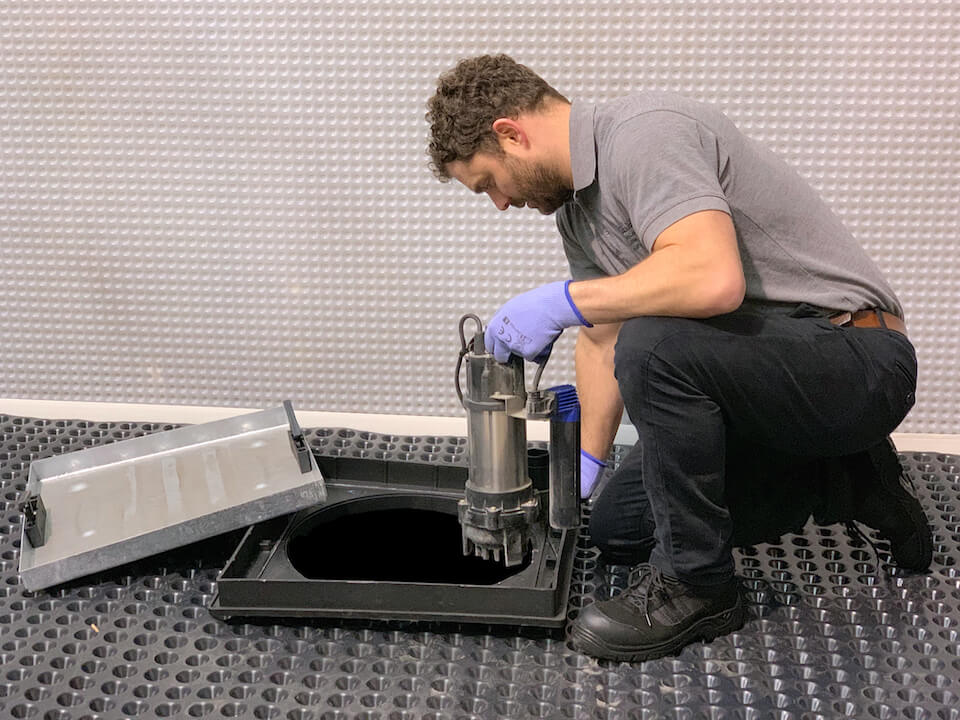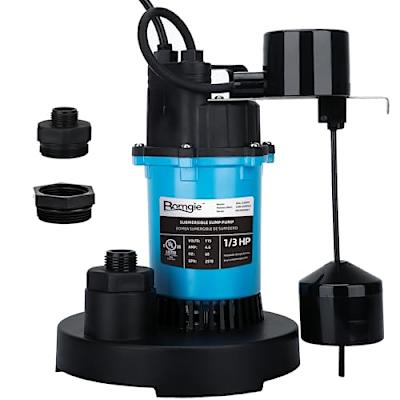Just how do you really feel in regards to Cleaning & Maintenance Tips for Your Home's Sump Pump?

Sump pumps are essential parts in many homes, especially in locations prone to flooding or excessive dampness. They aid prevent water damages by effectively getting rid of excess water from cellars or crawl spaces. Nevertheless, like any other appliance, sump pumps need routine upkeep to ensure they operate efficiently when required one of the most. Cleansing your sump pump is a vital part of its maintenance, and recognizing just how to do it correctly can conserve you from pricey repair services and possible calamities.
Introduction
Preserving a tidy sump pump is vital for its appropriate performance and durability. Disregarding this vital job can lead to obstructions, malfunctions, and inevitably, water damages to your property. As a result, learning just how to cleanse a sump pump is crucial for home owners that rely upon these devices to keep their basements completely dry and secured.
Signs of a Dirty Sump Pump
Recognizing when your sump pump needs cleansing is critical for avoiding potential breakdowns. Some common signs that suggest a dirty sump pump consist of unusual sounds during procedure, minimized water flow, and noticeable particles in the pit. If you observe any one of these signs and symptoms, it's vital to clean your sump pump without delay to avoid any more concerns.
Preparing for Cleansing
Before you start cleansing your sump pump, it's important to take some security preventative measures. Begin by shutting down the power to the pump to prevent any electric mishaps. Additionally, wear ideal safety gear, such as gloves and safety glasses, to safeguard on your own from dust, particles, and possible microorganisms.
Recognizing the Sump Pump
Before diving right into the cleansing procedure, it's important to have a basic understanding of just how a sump pump functions. Normally installed in a pit or container below the cellar floor, a sump pump contains several vital components, consisting of a pump, a float switch, and a discharge pipeline. When water accumulates in the pit, the float switch turns on the pump, which then pumps the water out with the discharge pipeline, far from the building's structure.
Detailed Overview to Cleaning a Sump Pump
Turning off the Power
Begin by separating the power supply to the sump pump to prevent any type of mishaps while cleansing.
Looking For Correct Performance
Prior to reinstalling the pump, carry out a quick test to guarantee that the float switch triggers the pump properly. Pour some water into the sump pit and observe the pump's operation. If everything is functioning properly, you can reassemble the pump and reconnect the power supply.
Eliminating Particles and Dirt
Make use of a container or a scoop to get rid of any type of visible particles, dirt, or sediment from the sump pit. Dispose of the debris properly to stop it from clogging the pump or the discharge pipeline.
Cleansing the Pump and Float Switch
Once the pit is free from debris, thoroughly remove the pump from the pit. Inspect the pump and the float button for any type of signs of damage or wear. Make use of a soft brush or towel to clean up the surface areas and eliminate any type of gathered grime.
Flushing the System
After cleaning up the pump and float button, purge the sump pit with clean water to remove any type of continuing to be dirt or sediment. This will certainly aid ensure that the pump operates smoothly and successfully.
Upkeep Tips to Maintain Your Sump Pump Clean
Along with periodic cleaning, there are several maintenance tips you can follow to keep your sump pump in optimal condition:
Verdict
Cleansing your sump pump is a vital aspect of its upkeep and ensures that it runs effectively when you require it the most. By complying with the steps outlined in this overview and incorporating normal maintenance into your regimen, you can extend the life expectancy of your sump pump and secure your home from water damages.
6 STEPS ON HOW TO CLEAN A SUMP PUMP PROPERLY
UNDERSTANDING SUMP PUMPS
Your sump pump plays a crucial role in protecting your home by managing and removing excess water. It primarily functions as a “shield”, guarding your basement against the damaging effects of water accumulation. The pump is housed in a sump pit in the lowest part of your basement, and its job is to pump out any water that collects there.
During heavy rainfalls or when snow melts rapidly, water can infiltrate your basement, posing potential risks like flooding, structural damage, and harmful mold growth. Here, the sump pump springs into action, pumping out the intruding water and directing it away from your home.
SAFETY FIRST
Before cleaning, remember to prioritize safety. Disconnect the sump pump from the power source to prevent any accidental electric shocks. Also, wear sturdy gloves to protect your hands from any sharp or dirty components within the pump.
REMOVE THE SUMP PUMP
After ensuring your safety, the next step is to remove the sump pump from its pit. Doing this might require careful maneuvering as you don’t want to damage any pump components. Once removed, clean the sump pit to remove any accumulated debris or sludge.
INSPECT THE PUMP
Inspect the pump for any visible signs of wear or damage. Check the power cord, float switch, and impeller housing. If any components look worn out or damaged, consider replacing them to ensure optimal performance.
CLEAN THE PUMP
Thoroughly clean the pump with warm, soapy water. Make sure to rid it of any dirt, gravel, or other debris that might impede its performance. You can use a toothbrush to clean the small, hard-to-reach parts of the pump.
REINSTALL THE SUMP PUMP
Reinstall the pump into the sump pit Make sure it’s positioned correctly to remove the water effectively Once it’s back in place, reconnect it to the power source TEST THE PUMP
Finally, pour some water into the pit to ensure the pump works correctly. It should start automatically and begin pumping out the water; if it doesn’t, check the power source and the positioning of the pump.
Remember, while cleaning your sump pump is an essential part of home maintenance, hiring a professional plumber for a thorough inspection and cleaning at least once a year is also important. This will ensure that your pump is in optimal condition, ready to protect your home from potential water damage.
BEST PRACTICES FOR CLEANING SUMP PUMP DISCHARGE PIPES
Regular Inspection: Regularly inspect your discharge pipes, especially during heavy rainfall or snowmelt periods. Look for any signs of blockage or damage. Early detection of problems can prevent serious issues down the line. Periodic Cleaning: Over time, sediment and debris can accumulate in the discharge pipes, impeding the flow of water. Regular cleaning helps keep the pipes clear and functioning efficiently. You can use a high-pressure water jet to effectively clean the pipes. Insulation During Winter: In colder climates, discharge pipes can freeze, blocking the outflow of water. Protect your discharge pipes from freezing temperatures by insulating them with foam pipe insulation. This will ensure the sump pump can continue to discharge water even in freezing conditions. Proper Positioning: The discharge pipe should be positioned to direct water away from your home’s foundation. Improper positioning can lead to water seeping back into the basement. Ensure the pipe is long enough and angled correctly. Installation of a Check Valve: A check valve prevents water from flowing back into your sump pit after the pump has pushed it out. Installing a check valve helps maintain the efficiency of your sump pump and reduces the risk of flooding. Minimize Pipe Turns: Every curve or turn in the discharge pipe can decrease the efficiency of water flow. By minimizing turns and bends in your discharge pipe, you can increase the efficiency of your sump pump. https://www.fullspeedplumbing.com/how-to-clean-a-sump-pump-properly9999/

I was brought to that editorial about Keep Your Sump Pump Clean, It'll Keep You Dry through a good friend on a different web address. Enjoyed reading our write-up? Please quickly share it. Help somebody else check it out. I praise you for your time. Please pay a visit to our blog back soon.
Click Here